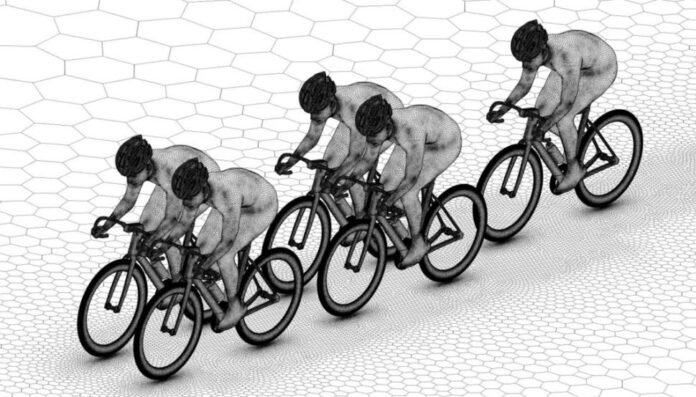A new study explains the best way for a small group of cyclists to position themselves to minimise the effort of one of those riders – perhaps the team leader, a sprinter, or just someone who is having a bad day. The science-backed tactics might also be useful to any small group riders – a bunch of mates, your local chaingang, or whatever. Essentially, the paper demonstrates that there are more effective formations than a single paceline (which you might have worked out yourself thanks to perceived exertion and/or a power meter) and quantifies the gains you can make by using a better strategy.
Back in 2018, we told you about a study that revealed the best place for riders to be in the peloton if they wanted to make the break.
That study was headed by Professor Bert Blocken, who has now led another team on a new paper: Aerodynamic drag in small cyclist formations: how to best shield the protected rider?
We’re talking about groups of 3-5 riders here, so it’s relevant to times in a race after a crash, a flat tyre, or when a team member gets separated from the peloton for some other reason and they need to get them back into the heart of things.
If you’ve ever dropped off the back of a group for any reason, you’ll know that aerodynamics are always important in getting back on. That’s certainly not a secret. Even if you were perfectly comfortable in the group, catching up again is another matter entirely.
Say a team has a few riders in a trailing group; how should they arrange themselves to make sure their favoured rider does the least amount of work possible? Bert Blocken and his team have performed CFD (computational fluid dynamics) simulations for 27 different formations of three, four, and five riders, with validation in the wind tunnel.
We’ll cut to the chase. These are the findings:
Arranging the riders into a single paceline doesn’t provide the largest shelter for the protected rider.
The paper says, “The results show that for three-cyclist formations, an inverted triangle formation can provide a drag reduction of the protected rider down to 39%, compared to a single rider, however at the expense of increased drag for the leading riders.
“For four-cyclist formations, a diamond formation yields a drag reduction to 38%, with all riders having a drag below that of a single rider.
“For 5-cyclist formations, a 2×2 formation in front of the protected rider reduces drag to 24%, which is 20% below the best position in the single paceline.”
You might have arrived at similar conclusions yourself through real-world experience, but now you have the science to quantify it and back you up.
If you’d like more detail, check out Aerodynamic drag in small cyclist formations: how to best shield the protected rider?








